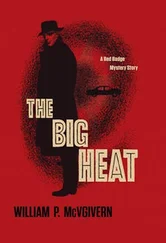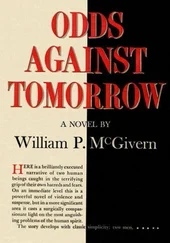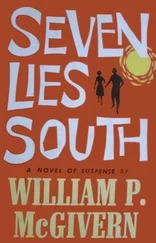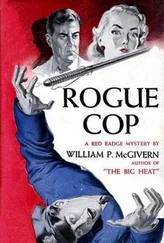Mrs. Adele Thomson had perjured herself and supported her son’s alibi for reasons which could only be speculated on... she had retreated into a state of real or affected shock since her fatal shooting of her husband, and had been judged by a competency board as unfit to stand trial at that time.
A court order, secured by Ferdinand Bittermank, had given the federal government possession of the film cassette Harry Selby recovered from Komoto’s shop in Philadelphia. This evidence was of only presumptive value now, since the film stock had shredded and dissolved while being reassembled by government technicians.
“It was an amateur’s job from start to finish,” the senator had told Selby. “Thomson used a second-grade stock, for some reason, didn’t understand the technical aspects of splicing and lighting and so forth.”
The content of the film as described by Selby and Wilger was not required in any event, since the film itself was not pertinent to the specifics of Jonathan Lamb’s indictments.
The People’s case against the principal conspirators was without loopholes. Only Judge Desmond Flood and Mr. Dominic Lorso had so far escaped the wide cast of the nets of justice. But everyone else variously faced disbarment, fines, loss of pension, deportation and prison terms... Counselor Davic, Captain Slocum and Lieutenant Eberle, the Reverend Oliver Jessup, Miguel Santos. And Earl Thomson.
Thomson’s confession was a vindictive document, with a tone of contemptuous satisfaction in its detailed accusations against those who had lied and schemed and suborned for him.
Ferdinand Bittermank attended the federal committee hearings with Selby and Lester. A strongly built man with a cold face, Bittermank had been assigned to complete the government’s investigation of the Correll Group network outside the United States. It was through Bittermank’s orders that the photographic technicians at the CIA had attempted to “save” and “restore” the Summitt film but the stock had been grainy and disintegrating, and many of the images so blurred and unfocused (as Selby himself had seen), that it would have been difficult to prove anything conclusive from the shredding foot-age.
Earl Thomson, speaking through his court-appointed attorney, had denied all knowledge of the film, as had Derek Taggart.
Bittermank’s position was that Summitt City was now a closed issue, that the Correll Group had been checked and contained at this point in the United States.
Operating with extensive but confidential instructions, Bittermank had instituted an investigation of the Correll Group’s commitments with foreign governments — in particular Belgium and the Netherlands, Africa and South America.
“His authority supercedes everyone’s in this area,” Lester told Selby.
“Summitt City, as Bittermank sees it,” Lester continued, “is at present nullified, dysfunctional, isolated, any or all three. In Bittermank’s own words; ‘We’re vaccinated against it.’ By which he means his technicians have clamped a surveillance bell over it. They’ve got the name of the Correll Group’s basic chemical formula.”
Bittermank’s people had picked up oblique references to the various Ancilia strains from taped conversations between General Taggart and Simon Correll, abstracted from one of the last “Snow Virgin recordings.” Still, the technicians hadn’t identified the compound other than by name and couldn’t determine what residue or discernible effects the Ancilia substance left or might leave with its subjects.
Under the umbrella of a government health inspection program, Bittermank’s team had examined a significant sample of the population at Summitt. However, they had found no traces of any determinant elements in bodily organs, liver, kidneys, blood stream and so forth. They had hypothesized then that since the Ancilia strain might be a mimetic synthesis of the human brain’s own chemical secretions, electro-brain scans couldn’t be expected to detect it either.
As indeed they had not.
Lester said, “The effect of this chemical compound on the people at Summitt hasn’t shown up in lab tests, and doesn’t seem to be a weighable or measurable entity. But I’m goddamn sure, Selby, from what you told me, that the Correll Group did achieve an effective control over the minds and emotions of the inhabitants of Summitt City. Still, that mental straitjacketing apparently can’t be tracked by sensors, chemical dyes, or presented on graphs. And Bittermank’s people, tops in their fields, haven’t even been able to pinpoint the source of the infusion element, whether it’s the water supply or an atmospheric inhalation from the fern and foliage irrigation system which is part of every building, home and office in Summitt, except — significantly, I’d say — those occupied by company managers, security personnel and the Correll living quarters.
“Ferdinand Bittermank,” Lester went on, “has carte blanche to investigate the potential international influence of the Correll Group. But even though I’ve been officially doubleparked on this, Selby, I still took my own personal look at Summitt, based on what you and I learned.”
On his orders, the senator explained, a group of sociologists and psychiatrists from various national health agencies had gone to Summitt to examine the inferences which seemed to be warranted from what Wilger and Selby had reportedly seen in the Earl Thomson film.
These classified reports to Senator Lester had so far been as inconclusive as those of Bittermank’s medical diagnosticians. The psychiatrists hadn’t observed any social or exterior pathologies whatsoever among the population at Summitt City. The eccentricities, or divergencies from accepted customs they’d noted were all on a scale in the “upper limits of normal.” Nothing aberrant, incapacitating or asocial had been uncovered.
“But the fact is,” Selby reminded the senator that morning in his office, “my father was a living example of what Taggart or Correll’s people could accomplish with drugs. You told me that yourself.”
“But he was a special instance, Selby. They couldn’t be complacent about their accomplishment with Jonas Selby because they’d failed with him.”
Senator Lester’s office was brightening; a sunny sheen covered the big office windows. The white mass of the Lincoln and Washington monuments stood out radiantly against the gradually widening horizons.
Victoria Kim, in a gray sheath dress and white clogs, brought in tea and breakfast rolls and gave Selby his airlines ticket to Philadelphia. “I’ve run Clem to bring the car around,” she told him. “If you leave in half an hour, you should have plenty of time. There won’t be any traffic.”
Victoria Kim poured tea into cups patterned with copper-colored flowers. Senator Lester relaxed in his chair, stretched his arms and said, “The fact is, Selby, the attitudes of the men and women at Summitt don’t differ significantly from the national average. Our social experts, of course, hedged their conclusions with the usual on-the-other-hand disclaimers and cop-outs. But their consensus is there’s no reliable way to establish what’s normal in these areas. Or even to say that selfish concern for one’s own immediate welfare is wrong.
“People don’t want to be their brothers’ keepers these days. They flat out don’t want to . That’s a fact you can’t argue with.”
“You feel I wasted my time trying?” Selby asked him.
Lester picked up a file from his desk, scanned it briefly, then dropped it in front of Selby. “It’s spelled out clearly enough. Emotional isolation, the psychiatrists insist, is not only a typical attitude but a sane and reasonable one today in most American communities. Any compulsion to get involved is suspect. It could reflect some mental imbalance, a dangerous or antisocial refusal to accept or come to terms with the status quo. Given our personal information and what inductive reasoning we can apply to the problem, it’s still a matter of conjecture whether the population of Summitt is programmed, permanently or not. The effects of the mimic chemicals may wear off. Or the people may go on indefinitely exactly as they are. It would be difficult to tell in either case, because our experts tell me they’d probably find the same rate of indifference they found at Summitt if they’d taken their samples in St. Louis or Boston or Atlanta or anywhere else for that matter.”
Читать дальше
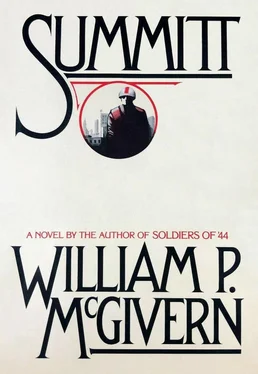
![Уильям Макгиверн - Завтра опять неизвестность [английский и русский параллельные тексты]](/books/35168/uilyam-makgivern-zavtra-opyat-neizvestnost-angli-thumb.webp)





